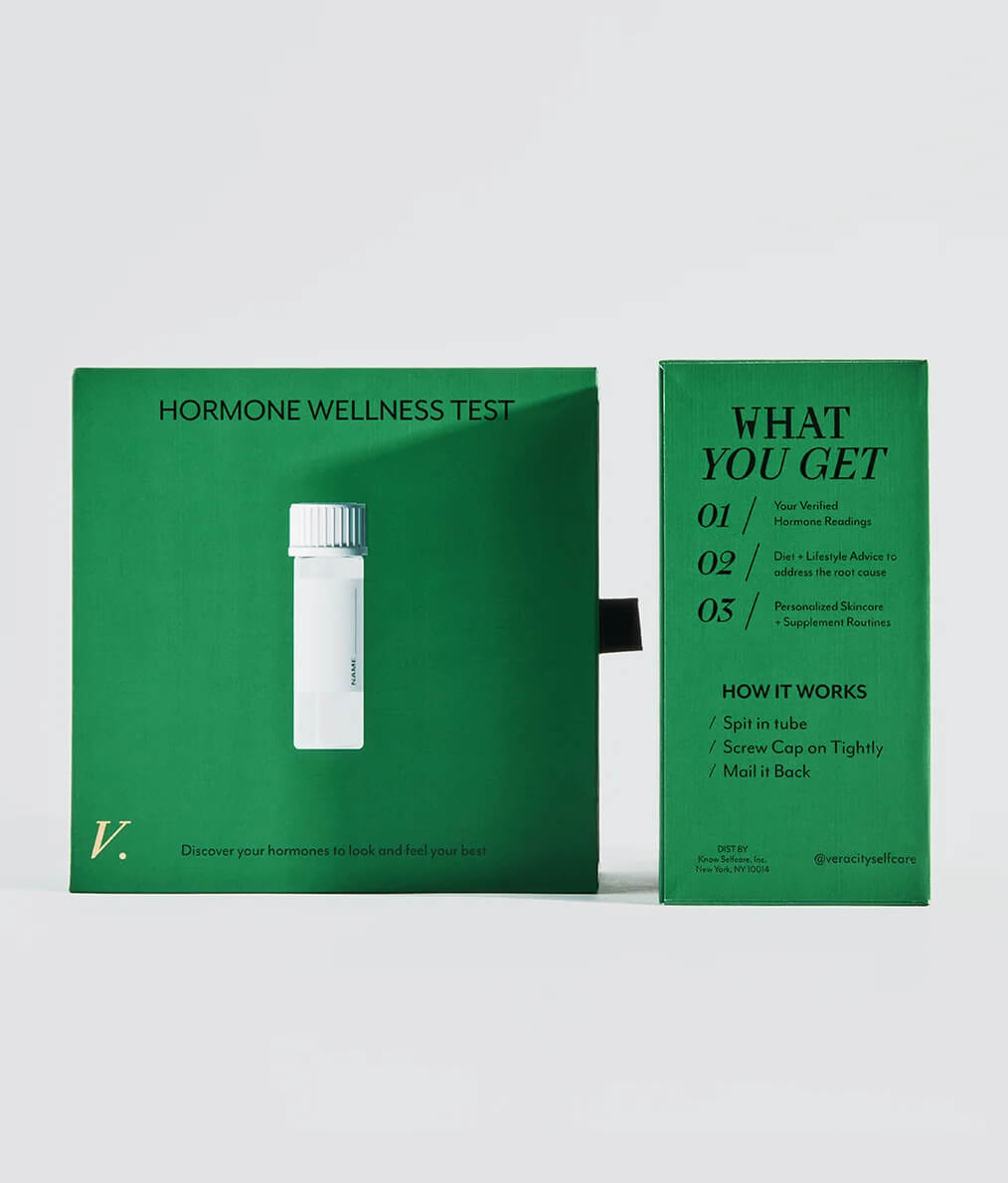Estrogen Dominance during Perimenopause: Causes and Solutions
For women, perimenopause often brings with it a host of hormonal imbalances,and that’s in addition to the biological hormone shifts that naturally occur during this time. One of the most prevalent imbalances is estrogen dominance, which can wreak havoc on physical and mental health. This holistic guide will explain why estrogen dominance is common during perimenopause, and provide actionable solutions for those experiencing its often-disruptive symptoms.
Let’s navigate this hormonal landscape, and equip you with insights that can lead to a more harmonious transition into menopause.
For more ways to make holistic living easy, check out my collective, the Superwoman Circle.
Unpacking Perimenopause and Hormonal Fluctuations
Perimenopause is a time of major transition. It happens in the years leading up to menopause, and is usually characterized by fluctuating hormone levels—particularly estrogen.
Your reproductive system begins to slow down and you may experience a myriad of symptoms, including irregular periods, hot flashes, and sleep disturbances. These changes are a natural part of the process, but can be quite challenging to navigate without proper understanding and support.
Plus, perimenopause symptom severity exists along a wide spectrum. Some women breeze through perimenopause easily, and others end up in a years-long battle with hormonal imbalances (1).
Estrogen Levels Are Erratic During Perimenopause
Estrogen, being the most prominent female hormone, plays a vital role in regulating the menstrual cycle, along with other bodily functions like bone density, cholesterol maintenance, and skin health.
During perimenopause, estrogen levels can become erratic (2). This hormonal rollercoaster can contribute to a state of imbalanced estrogen levels, leading to a variety of uncomfortable and distressing symptoms.
What Exactly Is Estrogen Dominance?
Estrogen dominance occurs when the level of estrogen in the body outweighs the level of progesterone, creating an imbalance in the ratio of these two essential hormones.
Estrogen isn’t bad, but like most things within the body, there’s a delicate balance, and estrogen is only problematic when there’s too much, or too little
When testing hormone levels, estrogen itself may not be concerningly high, but if progesterone is low, you may still have symptoms.

Common Symptoms of Estrogen Dominance
Women experiencing estrogen dominance may notice a range of symptoms that can significantly impact their quality of life. These often include (3):
- Irregular periods
- Mood swings
- Weight gain
- Insomnia
- Fatigue and decreased energy
- Decreased libido
Too much estrogen often creates broad symptoms, which makes it a challenging condition to identify and treat, as it can mirror other health issues.
Related: Why Heavy Periods Are Common During Perimenopause
How Women Become Estrogen Dominant
There are 3 main factors that contribute to developing estrogen dominance. For many women, you’re likely experiencing a combination of all three.
- The body over-produces estrogen
- You’re exposed to excess estrogen in our environment
- You can’t properly break down & metabolize estrogen
Typically, when you have estrogen issues, it’s a result of genetics, environment, and/or your diet.
Genetics can influence how much estrogen you make and how your body gets rid of estrogen, which occurs mainly in the gut and liver (4).
A big problem today, though, is environmental. Most women have a significant exposure to xenoestrogens (synthetic compounds that mimic estrogen) (5). Everything from plastic water bottles to pesticide-laden fruit can contain compounds that act like estrogen in our cells.
Chronic stress is also another major lifestyle factor. Prolonged stress (physical, emotional, or mental) ramps up production of the hormone cortisol, which has a negative effect of estrogen metabolism (6).
Since our gut and liver are both key players in estrogen detox, poor gut health or a sluggish liver—which are often the results of a bad diet—can also contribute to higher estrogen levels.
Read: Navigating Hormone-Disrupting Xenoestrogens in Your Food & Environment
Why Estrogen Dominance Is So Common During Perimenopause
Hormonal fluctuations during perimenopause are a natural contributor to estrogen dominance. As reproductive function winds down, ovaries take a backseat in hormone production, elevating the adrenal gland’s responsibility.
The potential for hormone imbalance rises as hormone-producing glands shift in their roles. For already overworked adrenal glands, taking on extra work can be the tipping point for experiencing symptoms of adrenal fatigue.
Perimenopause also corresponds to a time during many women’s lives where we’re not able to make our health a priority. We’re raising families, busy with a career, and often sleeping less than we should be, and managing stress poorly.
These years, coupled with the biological shifts happening naturally, create a perfect storm for estrogen issues in perimenopause.
The Impact of Estrogen Dominance on Women’s Health
Estrogen dominance poses more than just discomforting symptoms—it can also affect a woman’s long-term health.
Studies have connected estrogen dominance to an increased risk of certain cancers, including breast cancer, endometrial cancer, and ovarian cancer. This is mainly a result of poor estrogen metabolism in the gut, and other effects of microbiome dysbiosis (7).
Moreover, it has been associated with fibrocystic breast disease, fibroids, endometriosis, and reproductive issues.
The Assessment: Should You Test for Estrogen Dominance?
Considering the gravity of estrogen dominance, testing for this condition can be vital for understanding one’s health status. However, there’s no single cut-and-dry test that works for everyone. Here are the different methods that can indicate estrogen dominance:
Blood Tests
Plasma or serum tests can measure the levels of hormones in the blood. However, it’s important to note that hormone levels can fluctuate, and a one-time blood test might not provide a complete picture.
Saliva Tests
Saliva tests are commonly used to assess hormone levels, specifically the level of unbound, bioavailable hormones. This method of testing is simple, non-invasive, and can be easily completed at home.
Shop: Veracity Hormone Wellness Test Kit—Unlock the Answers to Balanced Hormones
Urine Tests
24-hour urinary hormone testing provides a collective measure of hormones excreted over a full day, offering a comprehensive look at hormone levels and metabolism. This type of test is known as a DUTCH test, which stands for dried urine test for comprehensive hormones. These tests are less influenced by recent diet and stress, providing a more accurate reading of hormone status (8).
Managing Estrogen Dominance: A Holistic Approach
Addressing estrogen dominance is as complex as the condition itself. Finding the right balance involves a combination of dietary adjustments, lifestyle changes, and in some cases, hormonal therapy.
Dietary Adjustments
A diet that promotes healthy estrogen levels can be a potent tool in combating estrogen dominance (9).
- Emphasizing whole foods, especially cruciferous vegetables that promote estrogen metabolism, can be beneficial.
- Reducing consumption of processed foods, which can contain hormone disruptors, is also crucial.
- Alcohol is a significant risk factor for estrogen issues, as well as for developing several types of cancer (10). Either reduce consumption, or avoid alcohol completely.
- Ensuring sufficient fiber intake to aid natural detoxification processes
- consuming adequate healthy fats are also vital components of a hormone-balancing diet.
Try: The Best Foods to Detox Excess Estrogen
Lifestyle Modifications
Managing stress is key in rebalancing hormones. Incorporating stress-reducing activities such as yoga, meditation, or spending time in nature can positively influence hormone levels. Regular exercise is also important, as it helps in weight management and can aid hormone regulation.
Create a Hormone-Friendly Environment
Eliminating or reducing exposure to xenoestrogens and other synthetic chemicals that can disrupt estrogen balance is critical. This includes switching to natural cleaning and personal care products, opting for organic food to avoid pesticides, and investing in a good water filtration system.
Consider Hormone-Balancing Supplements
Several supplements have shown to be beneficial in managing estrogen dominance during perimenopause. These include:
- DIM (di-indolylmethane): A compound found in cruciferous vegetables, DIM supports the body’s natural estrogen metabolism.
- B vitamins: Particularly B6, which assists in balancing estrogen and progesterone levels.
- Calcium-d-glucarate: Supports liver detoxification of excessive estrogens.
- Magnesium: Known for its role in over 300 enzymatic reactions, magnesium can support hormonal health and help mitigate symptoms of estrogen dominance.
Shop: The Hormone Balance Box
Hormone Replacement Therapies
For some women, hormone replacement therapies, including bio-identical hormone therapy, may be necessary to restore balance. This approach, however, should be undertaken with the guidance of an integrative health professional who has experience with women’s hormones.
I explain what you need to know about bioidentical hormone replacement therapy in my latest book, The Hormone Shift.
Embracing the Perimenopause Journey
Estrogen dominance is a common occurrence during perimenopause that can be difficult to navigate. By identifying the root causes, assessing hormone levels, and embracing a multifaceted approach to management, women can find relief from symptoms and support their long-term well-being.
Remember, each woman’s journey through perimenopause is unique. What works for one may not work for another. The key is to stay informed, listen to your body, and seek support from healthcare providers experienced in women’s health. By doing so, you can transition through perimenopause with grace, resilience, and most importantly, empowered with the knowledge to take control of your health.

